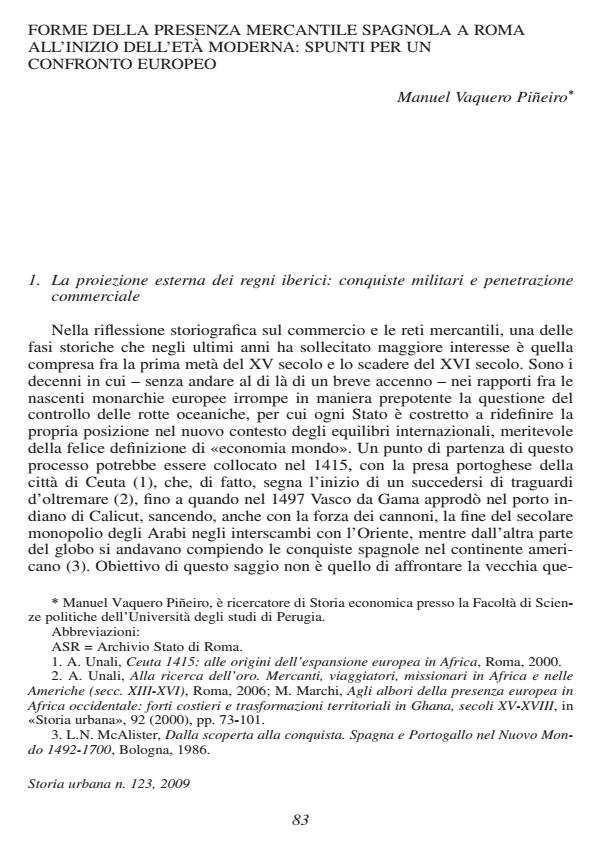Forme della presenza mercantile spagnola a Roma all'inizio dell'età moderna: spunti per un confronto europeo
Journal title STORIA URBANA
Author/s Pineiro Manuel Vaquero
Publishing Year 2009 Issue 2009/123
Language Italian Pages 18 P. 83-100 File size 596 KB
DOI 10.3280/SU2009-123004
DOI is like a bar code for intellectual property: to have more infomation
click here
Below, you can see the article first page
If you want to buy this article in PDF format, you can do it, following the instructions to buy download credits

FrancoAngeli is member of Publishers International Linking Association, Inc (PILA), a not-for-profit association which run the CrossRef service enabling links to and from online scholarly content.
Forme della presenza mercantile spagnola a Roma all’inizio dell’età moderna: spunti per un confronto europeo - The different forms of presence of Spanish merchants in Rome since the beginning of Early Modern Age: ideas for a debate at European level. Between the 15th and the 16th centuries, due also to the political coverage offered by the empire of Charles V, both Castilians and Catalans succeeded in establishing themselves as the most dynamic merchants in Europe. The control they had over strategic raw materials such as wool, iron and alum and their privileged position gave them easy access to monetary flows in the coastal cities from Flanders to the Mediterranean, where a number Spanish colonies were established. These cities were soon granted with major privileges by local authorities, which fostered the settling of merchants and bankers in certain areas therein. The result, as in the case of Bruges, was the creation of districts protected by exclusive jurisdictional rights or, as in the case of Rome, a random scattering of the new settlers, with no real reference points. In the mid 16th century, in Rome the distribution of places of work and residence followed no national or religious criteria. The complex structure of social relations was thus reflected also in Rome topography.
Pineiro Manuel Vaquero, Forme della presenza mercantile spagnola a Roma all'inizio dell'età moderna: spunti per un confronto europeo in "STORIA URBANA " 123/2009, pp 83-100, DOI: 10.3280/SU2009-123004